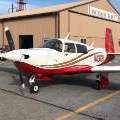Practicing Stalls in Mooneys (Poll)
Practicing Stalls in Mooneys
95 members have voted
-
1. What is your attitude toward practicing stalls in Mooneys?
-
Practicing them is unnecessarily risky and best avoided5
-
Only with an instuctor on board5
-
Only from really high up13
-
Keep the ball straight and it's no big deal47
-
Sure, let's go pratice some any time25
-


Recommended Posts
Join the conversation
You can post now and register later. If you have an account, sign in now to post with your account.